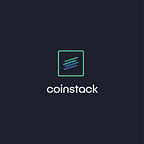What is an STO? STO’s Explained:
ICO’s were inarguably the craze of 2017, generating almost 6.5 billion dollars in investments for many early stage, cash-strapped start-ups on the blockchain. But now, as we’re nearing the close of 2018, a more clear dialogue has been established between the existence of ICO’s and a newer player, STO’s.
A Security Token Offering (STO) holds a similarity to an Initial Coin Offering (ICO) in that it allows the consumer to procure a token or currency through a public offering… but fortunately, that’s where the resemblances tend cease. STO’s hold a few specifically defined characteristics that arguably provide a massive advantage over tokens offered through an ICO. This manifests inside of the translation between investment and usability, and transparency for regulatory bodies.
One of the aspects that can differentiate an STO is its divergence from speculation, and instead the fact that these tokens are backed by an asset rooted in the real world.
This real-world support manifests in the form of profit, revenue, or even an asset like gold. To build upon this further, It can almost be likened to purchasing a share from a company where users now gain access to a series of rights to things like voting, decision making, or even dividends… all enabled through the blockchain.
This differs from a utility or traditional currency ICO in that these types of tokens or coins are backed by an intangible form of speculation, scarcity or little else. Generally, a utility ICO offers access to a specific network, platform, or service — all things speculative in nature with no grounding in their value. A common misunderstanding is that when more people are using the utility token, the token value will rise. This is not true because the value is only tied to the supply and demand. When people use the token, it means they pay with it and then the company will sell them back in exchange for fiat currency. This doesn’t influence the supply and demand. Unfortunately for these companies and their investors, this type of suppositional rooting doesn’t resonate well with regulatory bodies like the SEC.
While highlighting worries of fraud, theft and potentially worse, SEC commissioner Robert Jackson made the commentary,
“If you want to know what our markets would look like with no securities regulation, what it would look like if the SEC didn’t do its job? The answer is the ICO market…”
Fast forward to today and the answer that many have sought as a middle ground between investment, usability, and regulation now manifests within Security Tokens. Their stability and grounding in the real world, though not completely devoid of speculation, provides a much more transparent path for investors regarding their investment decision. And arguably the more important caveat is that regulatory bodies are postured to give the green light to these types of offerings while stifling ICO’s due to their convoluted instability, lack of transparency or true value, and therein lack of real-world application.
In an exclusive interview with CNBC Overstock CEO David Byrne discussing IPO’s vs. STO’s pointed out that
“Fraud and bad players in the ICO market have been a setback for those trying to raise money in a compliant way… The ICO craze of last year created a toxic waste dump of financial assets.”
He followed with,
“ I think the SEC should essentially shut down the utility token world. Eventually, the security offerings will just be done in lieu of the IPO in lieu of shares.
If security tokens interest you or you want to learn more about cryptocurrency in general, sign up for our beta at Coinstackapp.com!
Facebook.com/coinstackapp
Twitter.com/coinstackapp
